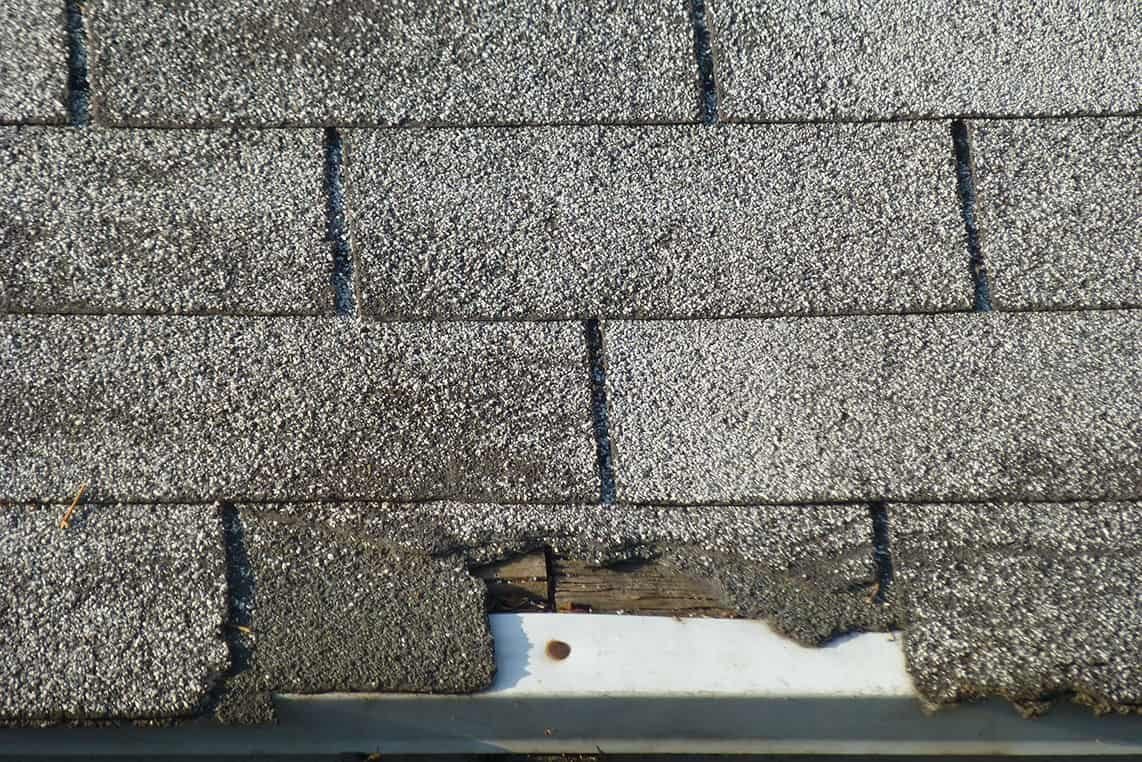How to Spot Early Signs of Roof Damage Before It’s Too Late
Your roof is critical to protecting your home, and catching early signs of damage can help you avoid costly repairs. Here are some common warning signs to watch out for:
1. Curling or Buckling Shingles
Shingles that curl or buckle may indicate weathering or poor attic ventilation. This can expose your roof to leaks, making it essential to address the issue promptly.
2. Missing or Loose Shingles
After storms, check for missing or displaced shingles. If shingles are missing, your roof’s waterproofing is compromised, increasing the risk of leaks and damage.
3. Missing Granules
Granules protect shingles from the elements, and if they’re missing, your roof becomes more susceptible to damage. You may find these granules accumulating in your gutters, which is a clear sign your shingles are deteriorating.
4. Water Stains or Leaks
If you see water stains or signs of moisture on the roof decking in your attic, it’s a clear indication of a leak. Catching leaks at this stage allows you to address the issue before it damages sheetrock or drywall inside your home. Regularly checking your attic for signs of water intrusion can save you from costly interior repairs and help prevent further structural damage.
5. Sagging Roof
A sagging roof indicates significant structural damage, often from water infiltration or excessive weight on the roof. Immediate professional attention is required to prevent further damage or collapse.
6. Daylight Through the Roof Boards
If you can see daylight coming through your roof in the attic, it’s a sign of gaps in your roofing material. This can lead to water intrusion, pests, and compromised insulation.
7. Increased Energy Bills
An unexplained rise in energy bills may indicate that your roof’s insulation or ventilation system is no longer effective. This causes heat or cold air to escape, making your HVAC system work harder.
8. Sapping in the Attic
Sapping, often caused by excessive heat, can occur when resin or sap seeps from the wood in your attic. If your attic isn’t properly ventilated, heat buildup can cause sapping, which weakens the structural integrity of your roof over time. Proper ventilation is key to preventing this and maintaining a healthy attic environment.
10. Rusted Flashing
Check for rust or corrosion on the metal flashing on the roof, especially around chimneys, vents, or skylights. Damaged flashing can allow water to seep through, causing leaks.
11. Mold or Mildew in the Attic
The presence of mold or mildew in the attic is a sign of moisture buildup, which could be caused by a roof leak or poor ventilation. Mold can spread quickly and damage both the roof and your home’s interior.
Get Regular Inspections
The best way to prevent roof damage is through regular inspections by a professional roofing contractor. At Framework Home Remodeling, we not only inspect the top of your roof but also check your attic and ventilation system. This comprehensive approach ensures that any underlying issues, such as leaks or poor ventilation, are caught early before they lead to bigger problems. Regular inspections, especially after severe weather, help keep your roof in peak condition.
For expert roofing services, contact Framework Home Remodeling to schedule a free roof inspection today.










